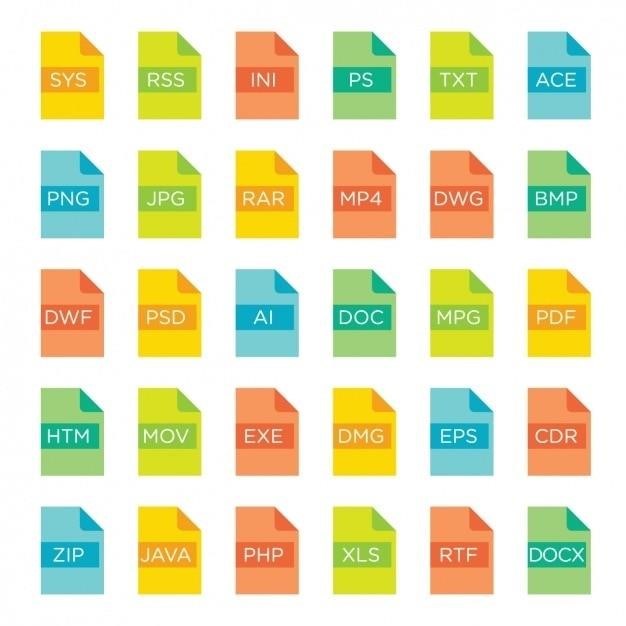Discover the essentials of human anatomy and physiology with PDF guides and workbooks designed for beginners․ These resources offer a comprehensive understanding of the human body’s structures and functions, making complex concepts accessible․ Perfect for students and lifelong learners, they provide detailed insights into cells, tissues, organs, and systems, ensuring a solid foundation for further study․
Overview of the Human Body
The human body is a complex system composed of 11 major anatomical systems, 206 bones, and various tissues and fluids․ These components work together to maintain life and enable functionality․ From the skeletal framework to the circulatory network, each part plays a vital role․ Understanding this intricate structure is essential for grasping anatomy and physiology․ Resources like PDF guides and workbooks simplify these concepts, offering detailed insights into the body’s design and operation for learners at all levels․
Importance of Studying Anatomy and Physiology
Understanding anatomy and physiology is crucial for grasping how the human body functions․ It forms the foundation for careers in healthcare, biology, and medicine․ Studying these subjects helps identify how systems interact and maintain health․ This knowledge aids in diagnosing diseases and developing treatments․ For students and professionals alike, it provides essential insights into the body’s structure and processes, enabling better decision-making and appreciation of human complexity․
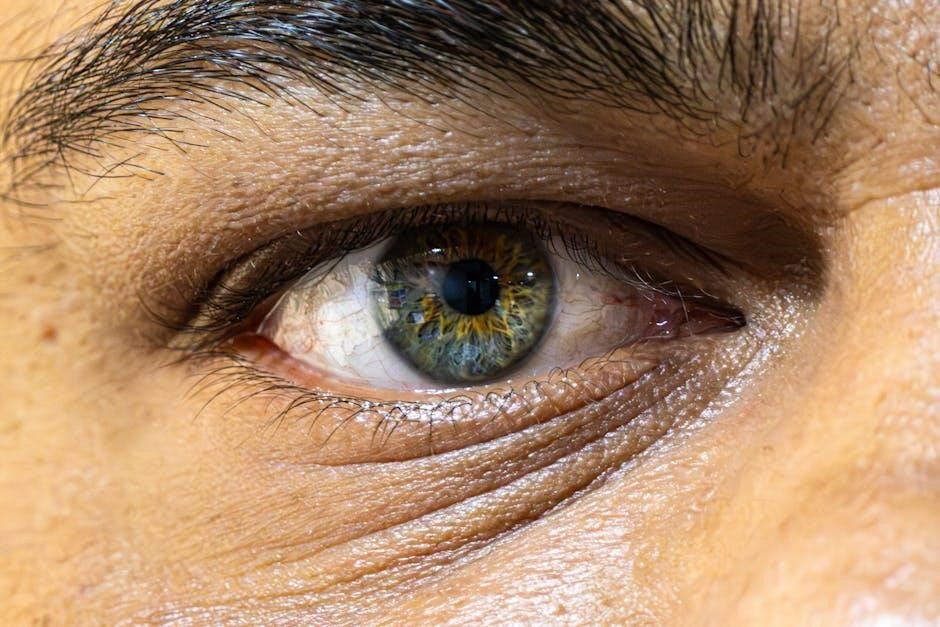
The Basic Building Blocks of the Human Body
The human body is composed of cells, tissues, organs, and systems, each working together to maintain life and function․ Understanding these elements is key to grasping anatomy and physiology․
Cells: The Fundamental Units of Life
Cells are the smallest living units of the human body, serving as the foundation for all biological functions․ Each cell contains essential components like the nucleus, mitochondria, and ribosomes, which perform vital tasks such as energy production and protein synthesis․ Understanding cell structure and function is crucial for grasping how the body operates, as cells are the building blocks for tissues, organs, and systems․ This knowledge is effectively explained in PDF guides like Anatomy and Physiology for Dummies, making complex concepts accessible to everyone․
Tissues: Groups of Specialized Cells
Tissues are groups of specialized cells that work together to perform specific functions․ There are four primary types: epithelial, connective, muscle, and nervous tissue․ Epithelial tissue forms linings and coverings, while connective tissue provides support and structure․ Muscle tissue enables movement, and nervous tissue facilitates communication through nerve impulses․ Understanding tissues is essential for grasping how cells contribute to the body’s overall function․ Resources like Anatomy and Physiology for Dummies offer clear explanations to help learners master this concept effectively․
Organs and Organ Systems
Organs are structures composed of two or more tissue types that perform specific functions․ Organ systems, like the digestive or respiratory systems, consist of multiple organs working together to maintain bodily functions․ These systems interact to sustain life, with each playing a unique role․ Understanding their organization and interdependence is crucial for grasping human anatomy․ Resources such as Anatomy and Physiology for Dummies provide detailed guides and interactive tools to help learners master these complex biological systems effectively․
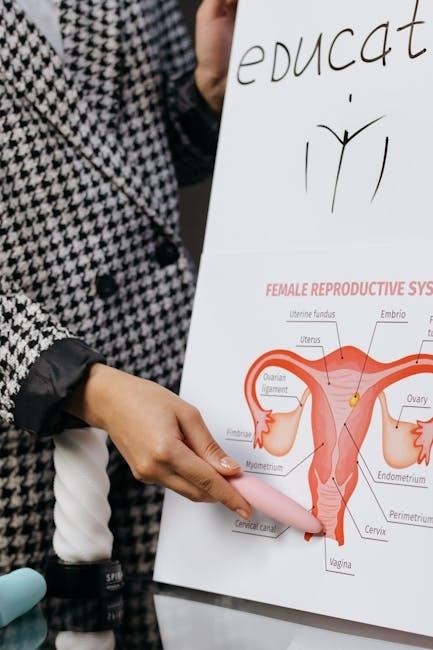
The Skeletal System
The skeletal system consists of bones, cartilage, and ligaments, providing structural support and protection for internal organs․ It includes the axial and appendicular skeleton, enabling movement through joints․
Bones and Joints
Bones are rigid, calcified structures that form the framework of the body․ They provide support, protection, and act as attachment points for muscles․ Joints, where bones meet, allow for movement, classified as movable, immovable, or slightly movable․ Ligaments and cartilage stabilize joints, ensuring smooth motion․ Understanding bones and joints is crucial for grasping skeletal function and mobility, as detailed in resources like PDF Anatomy and Physiology for Dummies, which offers in-depth insights into their structure and role in the body․
The Axial and Appendicular Skeleton
The axial skeleton includes the skull, vertebral column, ribcage, and sternum, forming the body’s central framework․ The appendicular skeleton comprises the upper and lower limbs, shoulders, and pelvis, enabling movement and locomotion․ Together, they create a balanced system for support, protection, and mobility․ Resources like PDF Anatomy and Physiology for Dummies provide detailed diagrams and explanations, helping learners understand these skeletal divisions and their vital roles in human anatomy․

The Muscular System
The muscular system comprises skeletal, smooth, and cardiac muscles, enabling voluntary and involuntary movements, supporting posture, and facilitating bodily functions through coordinated contractions and relaxations․
Types of Muscles: Skeletal, Smooth, and Cardiac
The human body contains three primary muscle types: skeletal, smooth, and cardiac․ Skeletal muscles, attached to bones, enable voluntary movements and posture․ Smooth muscles, found in internal organs, function involuntarily, regulating processes like digestion․ Cardiac muscle, exclusive to the heart, ensures continuous, rhythmic contractions․ Each type varies in structure and function but collectively supports movement, organ activity, and overall bodily stability, as detailed in PDF guides for anatomy and physiology learners․
Muscle Function and Movement
Muscles play a vital role in enabling movement, maintaining posture, and regulating body functions․ Skeletal muscles contract voluntarily, allowing actions like walking or lifting․ Smooth and cardiac muscles function involuntarily, controlling processes like digestion and heartbeat․ Movement occurs through muscle contractions, which pull on bones or other structures․ This mechanism is essential for locomotion, flexibility, and overall bodily coordination, as explained in PDF anatomy and physiology guides to help learners master these fundamental concepts․
The Nervous System
The nervous system controls body functions through neurons and nerve impulses․ It comprises the central and peripheral systems, enabling communication and coordination as detailed in PDF guides․
Structure and Function of Neurons
Neurons are specialized cells designed for communication, consisting of dendrites, a cell body, and an axon․ Dendrites receive signals, while the axon transmits them․ The cell body contains the nucleus and organelles essential for function․ Neurons communicate through electrical impulses (action potentials) and chemical signals (neurotransmitters) at synapses․ This complex structure enables the nervous system to process and transmit information efficiently, as detailed in PDF anatomy and physiology guides․
The Central and Peripheral Nervous Systems
The central nervous system (CNS) includes the brain and spinal cord, processing information and controlling body functions․ The peripheral nervous system (PNS) comprises nerves connecting the CNS to the body․ The PNS is divided into the somatic system, controlling voluntary actions, and the autonomic system, regulating involuntary functions like heart rate and digestion․ Together, these systems enable communication and coordination, as detailed in PDF anatomy and physiology resources, ensuring the body operates efficiently․
The Circulatory System
The circulatory system, including the heart, blood vessels, and blood, transports oxygen, nutrients, and hormones throughout the body․ It maintains health and enables cellular function․
Heart and Blood Vessels
The heart is a muscular organ with four chambers that pumps blood through the circulatory system․ It ensures oxygenated blood reaches tissues and deoxygenated blood returns to the lungs․ Blood vessels, including arteries, veins, and capillaries, act as pathways for blood flow․ Arteries carry blood away from the heart, while veins return it, and capillaries facilitate nutrient and oxygen exchange․ This system is vital for maintaining life and overall bodily functions․
Blood and Its Components
Blood and Its Components
Blood is a vital fluid composed of plasma, red blood cells (RBCs), white blood cells (WBCs), and platelets․ Plasma carries nutrients, hormones, and waste products, while RBCs transport oxygen throughout the body using hemoglobin․ WBCs are essential for immune defense, fighting infections and diseases․ Platelets play a crucial role in blood clotting, preventing excessive bleeding․ Together, these components ensure proper bodily functions, maintaining overall health and well-being․
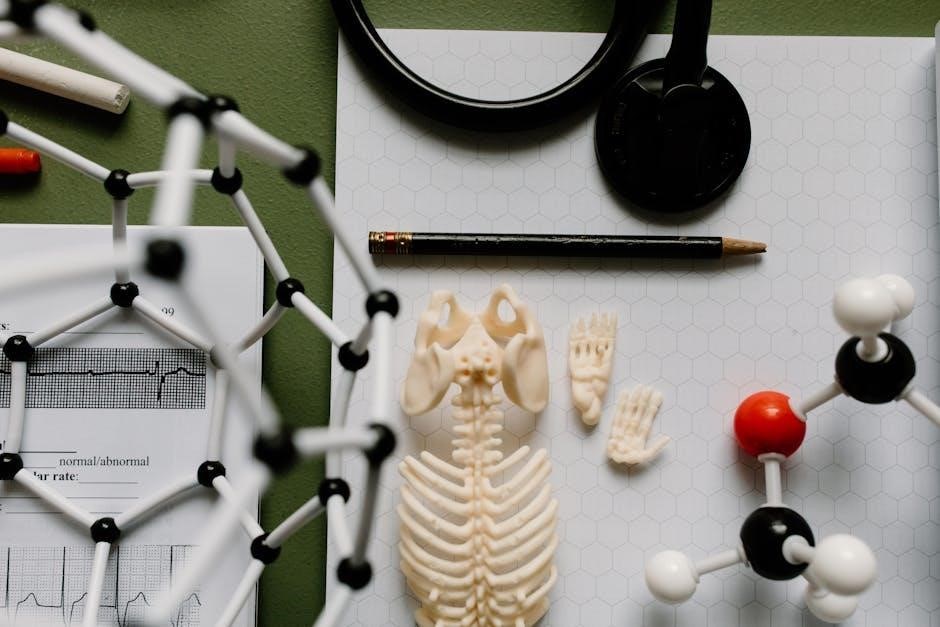
The Respiratory System
Explore the respiratory system, focusing on breathing mechanics and lungs․ Learn how oxygen is absorbed and carbon dioxide expelled, maintaining vital gas exchange for overall health․
The Process of Breathing
The process of breathing involves the coordinated effort of muscles and nerves to facilitate gas exchange․ Inhalation occurs as the diaphragm contracts, expanding the chest cavity and drawing air into the lungs․ Exhalation follows as the diaphragm relaxes, pushing air out․ This essential function is regulated by the nervous system, ensuring oxygen is absorbed and carbon dioxide is expelled, maintaining life and overall health․
Lungs and Airway passages
The lungs are vital organs responsible for gas exchange, located in the thoracic cavity and protected by the ribcage․ Air enters through the trachea, dividing into bronchi and bronchioles, leading to alveoli․ These tiny air sacs facilitate oxygen absorption into the bloodstream and carbon dioxide removal․ The airway passages ensure efficient airflow, maintaining respiratory health and overall bodily functions, as detailed in PDF guides like Anatomy and Physiology for Dummies․
The Digestive System
The digestive system transforms food into nutrients for energy and growth․ It includes organs like the mouth, esophagus, stomach, and intestines, working together to break down food․
From Mouth to Stomach
The digestive journey begins in the mouth, where teeth chew food and enzymes like amylase break down carbohydrates․ The esophagus uses peristalsis to propel food to the stomach․ Upon entering the stomach, food mixes with gastric juices containing enzymes and acids that further break it down into a liquid mixture called chyme․ This process ensures proper nutrient absorption in the intestines, highlighting the stomach’s crucial role in digestion․ PDF guides detail these steps, making them easy to understand for learners;
Small and Large Intestines
The small intestine, lined with villi, absorbs nutrients into the bloodstream, while the large intestine absorbs water and electrolytes, forming waste․ PDF guides explain how bile and enzymes aid digestion in the small intestine, and how the large intestine houses gut microbiota, essential for health․ These processes ensure proper nutrient uptake and waste elimination, highlighting the intestines’ vital roles in digestion and overall well-being․ Detailed diagrams in these resources make complex functions easy to understand for learners at all levels․
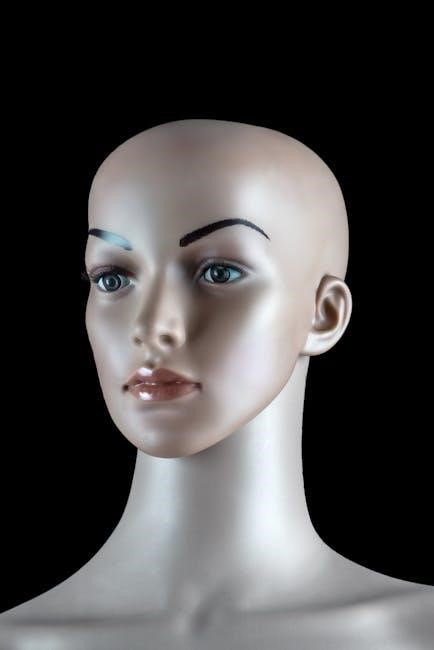
The Endocrine System
The endocrine system regulates bodily functions through hormones, produced by glands like the pancreas, thyroid, and adrenal glands․ It controls metabolism, growth, and stress responses, interacting with other systems to maintain homeostasis․
Hormones and Glands
Hormones are chemical messengers produced by endocrine glands, regulating various bodily functions․ The pituitary gland, often called the “master gland,” controls other glands․ The pancreas produces insulin and glucagon to regulate blood sugar․ Adrenal glands release adrenaline, while the thyroid gland manages metabolism․ These glands work together to maintain homeostasis, ensuring proper bodily functions․ Understanding their roles is crucial for grasping how the endocrine system influences growth, development, and overall health․
Key Endocrine Organs
The endocrine system comprises several vital organs that produce and secrete hormones․ The pancreas, thyroid, adrenal glands, and gonads (ovaries and testes) are central to this process․ The pancreas regulates blood sugar with insulin and glucagon, while the thyroid controls metabolism through hormones like thyroxine․ Adrenal glands produce adrenaline and cortisol, essential for stress responses․ Ovaries and testes regulate reproductive hormones, maintaining fertility and sexual health․ These organs work harmoniously to ensure bodily functions operate smoothly and efficiently․
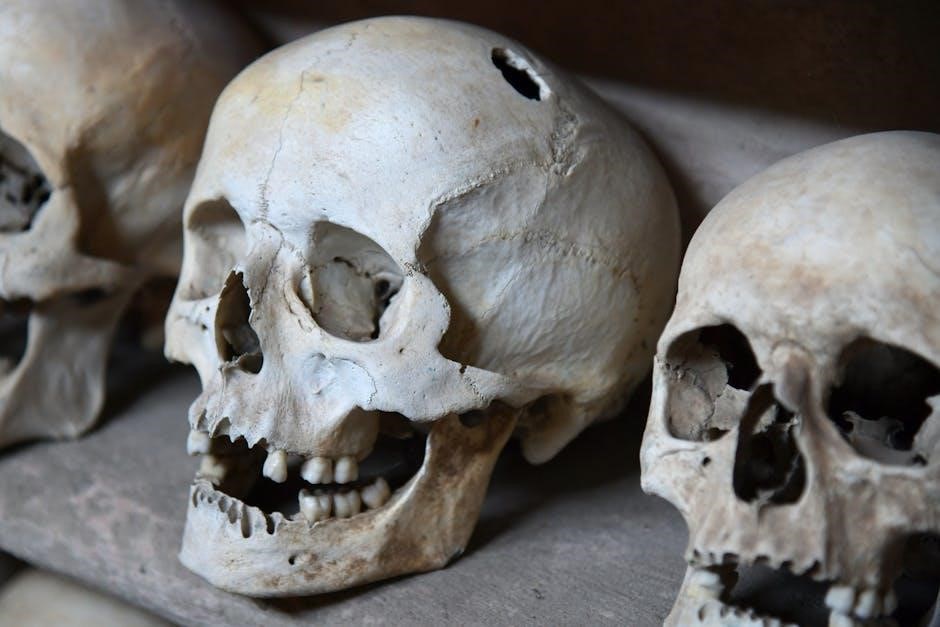
The Urinary System
The urinary system, or renal system, eliminates waste and excess fluids through urine production․ It includes the kidneys, ureters, bladder, and urethra, working together to filter blood, store urine, and facilitate excretion․
Kidneys and Their Function
The kidneys are vital organs located in the lower back, responsible for filtering blood to remove waste and excess fluids, which become urine․ They regulate electrolyte levels, maintain acid-base balance, and produce hormones like erythropoietin and renin․ Each kidney contains nephrons, the functional units performing filtration․ Proper kidney function is essential for overall health, with dysfunction leading to conditions like kidney failure․ Understanding their role is crucial for maintaining urinary and systemic health․
Urination Process
The urination process begins with the kidneys filtering blood to produce urine, which is stored in the bladder․ As the bladder fills, nerve signals trigger the urge to urinate․ The brain coordinates the detrusor muscle’s contraction and the urethral sphincter’s relaxation, allowing urine to exit․ This complex process involves the nervous system, ensuring proper elimination of waste․ Understanding it aids in appreciating urinary health․
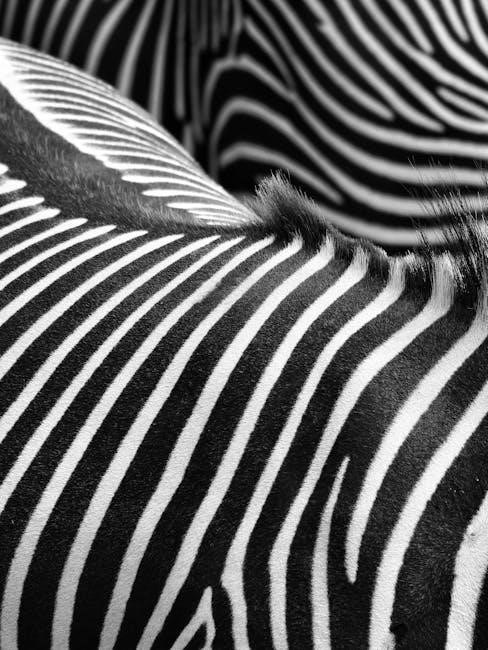
The Reproductive System
The reproductive system enables conception and development, involving male and female organs․ It ensures the continuation of species through processes like gamete formation and embryonic development․
Male and Female Reproductive Organs
The male reproductive system includes the testes, penis, and associated glands, responsible for sperm production and delivery․ The female reproductive system features the ovaries, uterus, and vagina, essential for egg production, fertilization, and nurturing a developing fetus․ Both systems are intricately designed to facilitate conception and support the early stages of human development․ Understanding these organs and their functions is crucial for grasping reproductive health and processes․
Conception and Development
Conception occurs when a sperm fertilizes an egg in the fallopian tube, forming a zygote․ This single cell begins dividing as it travels to the uterus, where it implants in the uterine lining․ From zygote to embryo, and finally to fetus, the developing human undergoes rapid growth and differentiation․ The placenta forms, providing essential nutrients and oxygen while removing waste, supporting the fetus until birth․ This intricate process ensures life progresses from a single cell to a fully formed baby․
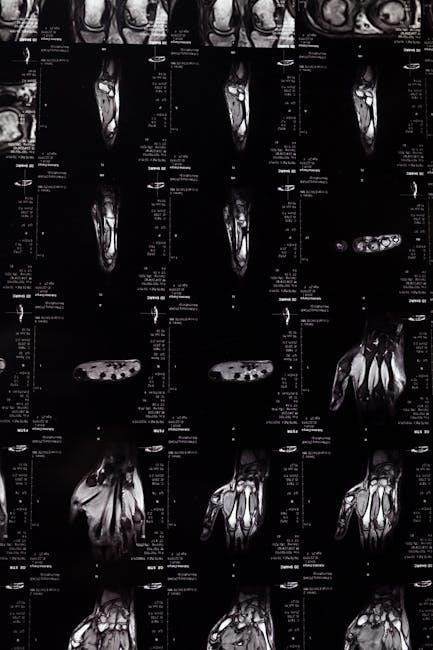
Learning Resources and Tools
Explore PDF guides and workbooks like Anatomy and Physiology For Dummies and its workbook edition, offering detailed exercises and interactive content․ These tools enhance learning with clear explanations and visuals․
PDF Guides and Workbooks
Anatomy and Physiology For Dummies and its workbook editions are excellent resources for learners․ These PDF guides provide comprehensive coverage of the human body, including cells, tissues, and organ systems․ With hands-on exercises and visual aids, they simplify complex concepts․ The 3rd Edition by Erin Odya and the workbook by Janet Rae-Dupree and Pat DuPree are highly recommended․ These tools are ideal for students and self-learners, offering detailed insights and practical applications to master anatomy and physiology effectively․
Online Courses and Tutorials
Enhance your learning with online courses and tutorials that complement PDF guides on anatomy and physiology․ Platforms like Perlego offer unlimited access to e-books and interactive resources․ OpenStax’s free online materials provide structured lessons and quizzes․ These tools are perfect for self-paced learning, allowing you to explore topics like cells, tissues, and organ systems in depth․ Video tutorials and 3D models make complex concepts engaging․ Whether you’re a student or a curious learner, these resources ensure a dynamic and effective study experience․
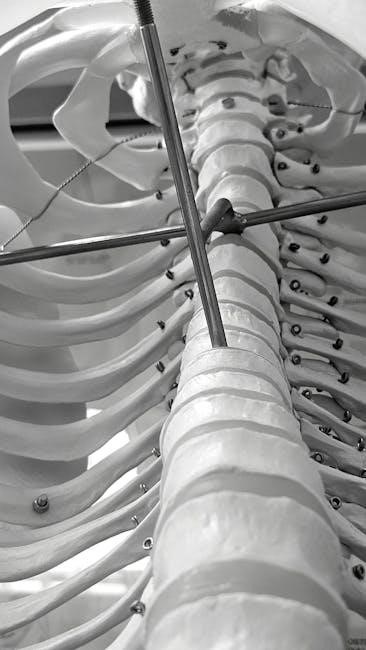
Practical Applications and Tips
Master anatomy and physiology with practical tips like active learning techniques, using diagrams, and memorization tools․ Focus on understanding functions over rote learning for better retention․
Study Techniques for Anatomy and Physiology
Effective study techniques include using diagrams, flashcards, and workbooks to reinforce learning․ Engage with online tutorials and practice quizzes to test knowledge․ Focus on understanding how systems interact rather than memorizing terms․ Use active learning methods, like labeling anatomy images, to enhance retention․ Break study sessions into manageable chunks, and review regularly to avoid overwhelm․ Incorporate real-world applications to stay motivated and deepen comprehension of complex concepts․
Common Mistakes to Avoid
Common mistakes include confusing anatomical terminology and failing to understand how systems interact․ Overreliance on rote memorization without grasping functions can hinder comprehension․ Neglecting to practice with diagrams and 3D models often leads to misunderstandings․ Additionally, ignoring the importance of proper study techniques, such as active learning and regular review, can result in poor retention․ Avoid procrastination by breaking topics into smaller, manageable sections and utilizing resources like workbooks and online tutorials to reinforce learning․



